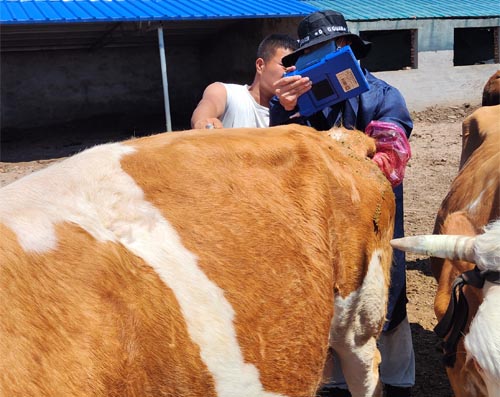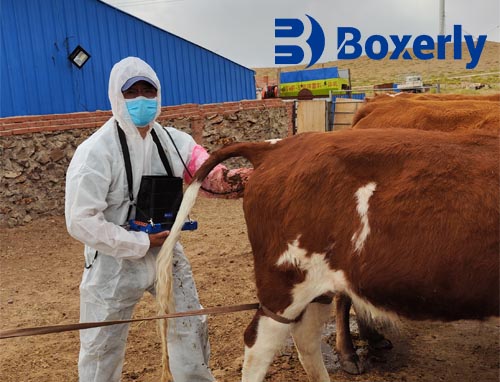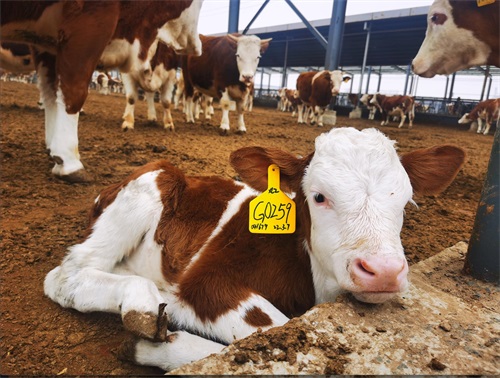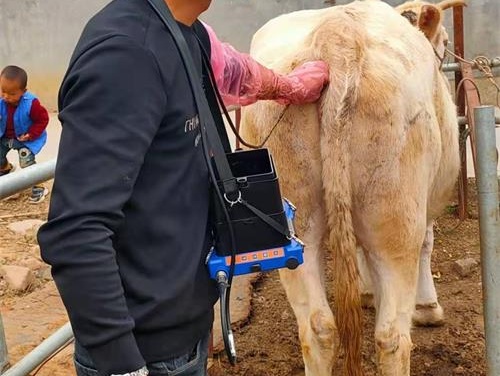Around the 31st day of pregnancy in cows, the length of the forelimbs and hindlimbs of the embryo observed on a B-ultrasound machine was 3 millimeters and 2 millimeters, respectively. On the 60th day of pregnancy, their lengths are 21 and 12 millimeters, respectively. They are now easily recognizable. Around the third month of pregnancy, the average length of different parts of the forelimbs and hindlimbs ranges from 12 to 16 millimeters. Then their growth grows exponentially, reaching a length of 55 to 65 millimeters around the sixth month of pregnancy.
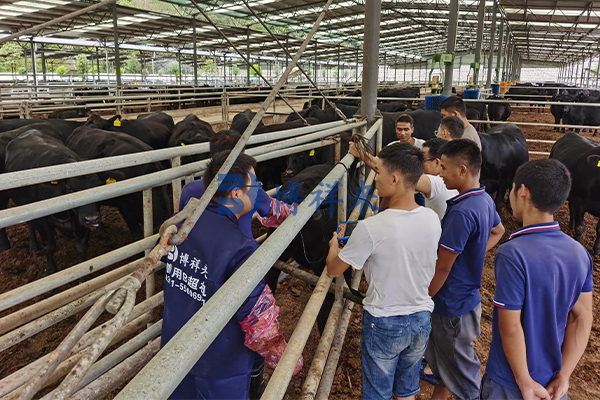
B-ultrasound image of cow pregnant for 33 days
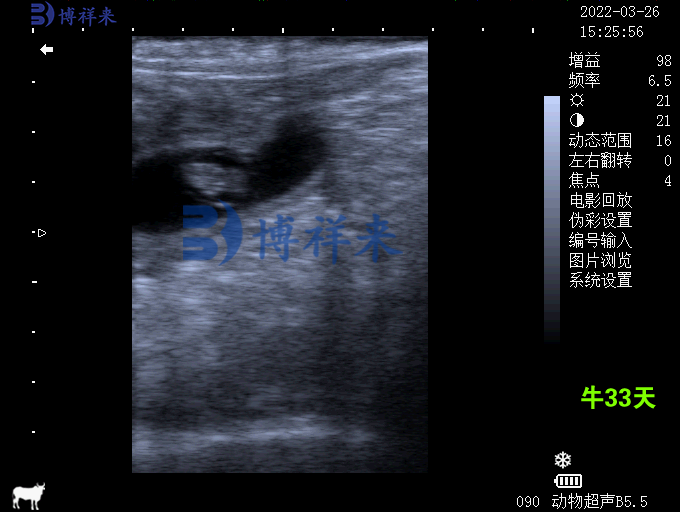
The spine of a calf embryo can be exposed from the 5th week of pregnancy. As ossification progresses, areas of acoustic shadow may appear in cattle using B-ultrasound examination. The L-shaped development between the 29th and 39th day of pregnancy is due to the elongation of the cervical region and the elongation of the embryonic head.
On the 40th day of pregnancy, the anechoic orbital cavity can be clearly identified. After one to two weeks, the crystalline lens can be seen on the cross-section of the head. From this perspective, the orbital cavity appears spherical in longitudinal cross-section, but elliptical in shape. Their diameters are 4mm in the second month of pregnancy, 10mm in the third month, and 3cm at the end of pregnancy.
The first hyperechoic bone structure of the head appears in the oral cavity, and then appears in the skull between the 50th and 60th day of pregnancy. At the end of the third month of pregnancy, different structures of the head are easily recognizable. At the second month of pregnancy, the inner and outer diameters of the cranial cavity were 10 millimeters and 17 millimeters, respectively. In the sixth month of pregnancy, their average values range from 63-76 millimeters, while in the seventh month they range from 80-96 millimeters. The cranial cavity is usually not visible during the last two months of pregnancy. Then the movement of the eyelids, tongue, and jawbone of the embryo can gradually be observed, forming as many signs of fetal survival as possible.
Ossification centers appear in the pelvis of cows around the second month of pregnancy. After three to four weeks, the ilium and ischium can be identified as four hyperechoic rods, with the ischium being slightly shorter than the ilium. In the third month of pregnancy, their length ranges from 8 to 10 millimeters, and around the sixth month of pregnancy, their length ranges from 35 to 45 millimeters.
Along with the cervical spine, the trachea is the most developed structure in the neck. In the longitudinal section of the bovine ultrasound, it appears as an anechoic cylindrical structure lined with more echo points, namely its cartilage wall. At 100 days of pregnancy, the diameter is about 4mm, and at around 6 months of pregnancy, the diameter is about 10mm.
The lungs and liver exhibit similar echoes. The liver is penetrated by multiple anechoic blood vessels, and the stomach occupies the posterior part of the chest cavity. The different parts of the latter can be easily identified from the second month of pregnancy. Subsequently, the stomach contents become echogenic and turbulent phenomena can be observed there.
The umbilical cord can be detected from the 6th week of pregnancy. Around the third month of pregnancy, it is possible to distinguish between the arteries and veins that make up it, and arterial pulsation can be easily observed. The diameter is about 5-10mm in the third month of pregnancy, and about 5cm around the seventh month.
The scrotum can be identified around the 50th or even 60th day of pregnancy, and the testicles can only be seen around the 4th month of pregnancy. Their echoes are usually lower than those of the surrounding scrotum. Testicular descent occurs in cows between the third and fifth months of pregnancy.
The ossification of the skull and ribs occurs between the 55th and 60th day of pregnancy. Between the 61st and 65th day of pregnancy, the jaw, cervical spine, thoracic spine, lumbar spine, sacral spine, and limbs will also undergo ossification. Between day 66 and day 70, the shoulders, ilium, and ischium can be seen. The coccyx ossifies between day 71 and day 80, while the sternum and phalanges ossify between day 81 and day 85.
The kidneys can be identified from the fourth month of pregnancy. Their cortex has echoes, while their medulla has no echoes. The bladder is rarely recognizable. In addition, its inner diameter is variable, ranging from 3 to 10 millimeters around the third month and 20 to 30 millimeters around the seventh month.
